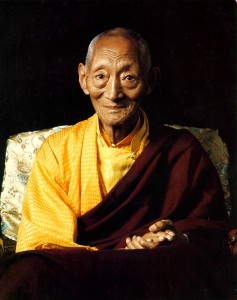Posts Tagged ‘impermanence’
Take A Banker’s Holiday
“Mind is memory, at whatever level, by whatever name you call it; mind is the product of the past, it is founded on the past, which is memory, a conditioned state.” “Truth is not a memory, because truth is ever new, constantly transforming itself. (M)emory is a hindrance to the understanding of what is. The timeless can be only when memory, which is the `me’ and the `mine’, ceases.”
~ J. Krishnamurti
To think or not to think,
that is the question!
~ Ron Rattner, Sutra Sayings
Thinking and Being can’t coexist.
So stop thinking and start Being.
~ Ron Rattner, Sutra Sayings
Forget who you think you are
to Know what you really are.
~ Ron Rattner, Sutra Sayings

Take A Banker’s Holiday
Mind is a ‘memory bank’ where we keep
all past recollections and conceptions.
We are all memory bankers, using our memory banks to think –
mostly constantly and compulsively.
So thinking is always past, not present.
Thoughts are then, while life is NOW – not then.
And life is perpetual, while thinking is optional.
So to live optimally,
Let’s live presently,
But think optionally –
Not constantly or compulsively.
Let’s lock-up our ‘memory banks’, and
Take a banker’s holiday –
NOW!
Ron’s audio recitation of “Take A Banker’s Holiday”
Kalu Rinpoche, the Zen Master and the Orange
“Reality is merely an illusion, albeit a very persistent one.”
~ Albert Einstein

Kalu Rinpoche (1905 – May 10, 1989)
Ron’s Introductory Comments.
Is “reality” absolute or relative?
And how should the answer to that question influence our worldly ways?
Our phenomenal Universe is miraculous, marvelous, and meaningful. But it is ever changing and impermanent – a “relative reality” of space, time and causality which some mystics call illusion, samsara, or maya.
It arises and appears in an unchanging mysterious matrix of Infinite Potentiality, which some call “Absolute Reality”.
When aware or awakening to this distinction between Absolute and relative reality, we may realize that while we are apparent entities in this world, our Source and ultimate identity transcends this world; that we are ‘in this world but not of this world’.
Thus realizing the impermanence and relativity of our phenomenal reality, we may ponder on its meaning and purpose and, accordingly, on how to best behave herein: viz. what thoughts, words or deeds (if any) are most appropriate and skillful?
SillySutras.com is dedicated to raising perennial questions about how to best be in this world. Even spiritual masters and great scholars can disagree on answers to such questions.
So, ultimately, each of us must intuitively answer such questions for ourselves.
In the opening chapter of “Thoughts Without a Thinker”, concerning psychotherapy from a Buddhist perspective, author psychotherapist Mark Epstein recounts this apt anecdote about a meeting at the home of a Harvard University psychology professor of two prominent teachers of Buddha-dharma with different ideas about dharma.
“Thoughts Without a Thinker”, by Dr. Mark Epstein – Excerpt From Chapter One.
“In the early days of my interest in Buddhism and psychology, I was given a particularly vivid demonstation of how difficult it was going to be to forge an integration between the two. Some friends of mine had arranged for an encounter between two prominent visiting Buddhist teachers at the house of a Harvard University psychology professor. These were teachers from two distinctly different Buddhist traditions who had never met and whose traditions had in fact had very little contact over the past thousand years. Before the worlds of Buddhism and Western psychology could come together, the various strands of Buddhism would have to encounter one another. We were to witness the first such dialogue.
The teachers, seventy-year-old Kalu Rinpoche of Tibet, a veteran of years of solitary retreat, and the Zen master Seung Sahn, the first Korean Zen master to teach in the United States, were to test each other’s understanding of the Buddha’s teachings for the benefit of the onlooking Western students. This was to be a high form of what was being called ‘dharma’ combat (the clashing of great minds sharpened by years of study and meditation), and we were waiting with all the anticipation that such a historic encounter deserved. The two monks entered with swirling robes — maroon and yellow for the Tibetan, austere grey and black for the Korean — and were followed by retinues of younger monks and translators with shaven heads. They settled onto cushions in the familiar cross-legged positions, and the host made it clear that the younger Zen master was to begin. The Tibetan lama sat very still, fingering a wooden rosary (mala) with one hand while murmuring, “Om mani padme hum” continuously under his breath.
The Zen master, who was already gaining renown for his method of hurling questions at his students until they were forced to admit their ignorance and then bellowing, “Keep that don’t know mind!” at them, reached deep inside his robes and drew out an orange. “What is this?” he demanded of the lama. “What is this?” This was a typical opening question, and we could feel him ready to pounce on whatever response he was given.
The Tibetan sat quietly fingering his mala and made no move to respond.
“What is this?” the Zen master insisted, holding the orange up to the Tibetan’s nose.
Kalu Rinpoche bent very slowly to the Tibetan monk near to him who was serving as the translator, and they whispered back and forth for several minutes. Finally the translator addressed the room: “Rinpoche says, ‘What is the matter with him? Don’t they have oranges where he comes from?”
The dialog progressed no further.”
